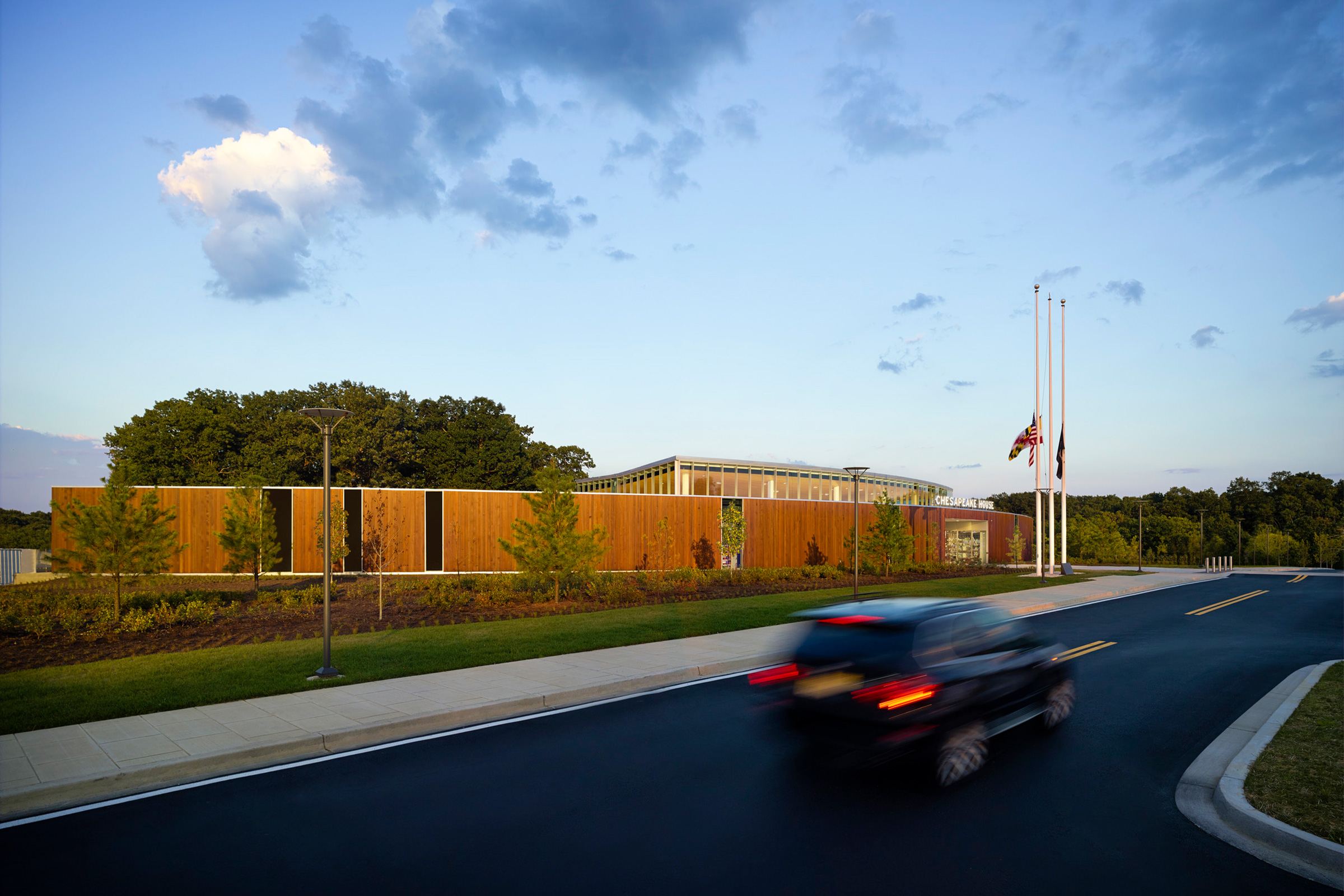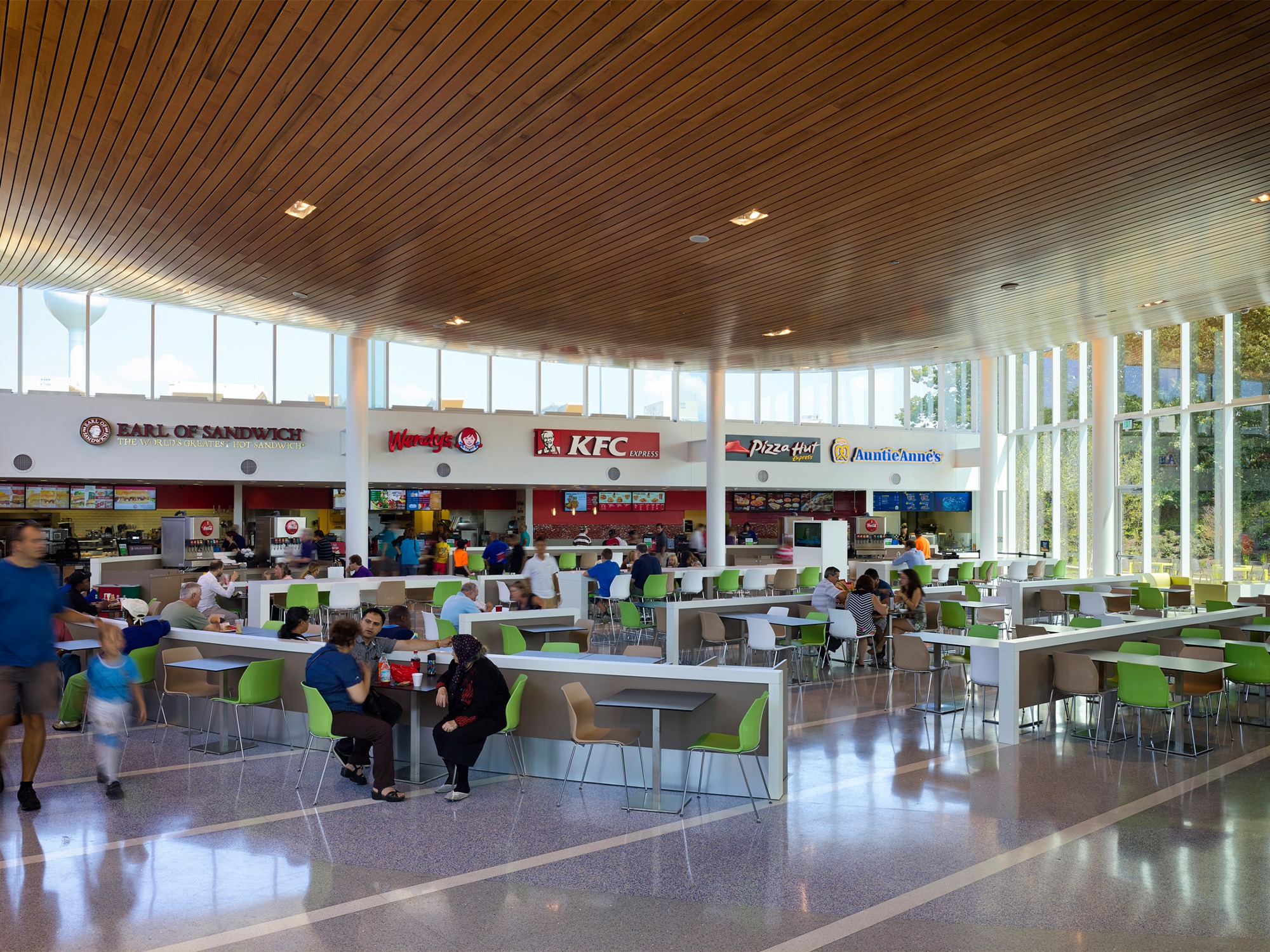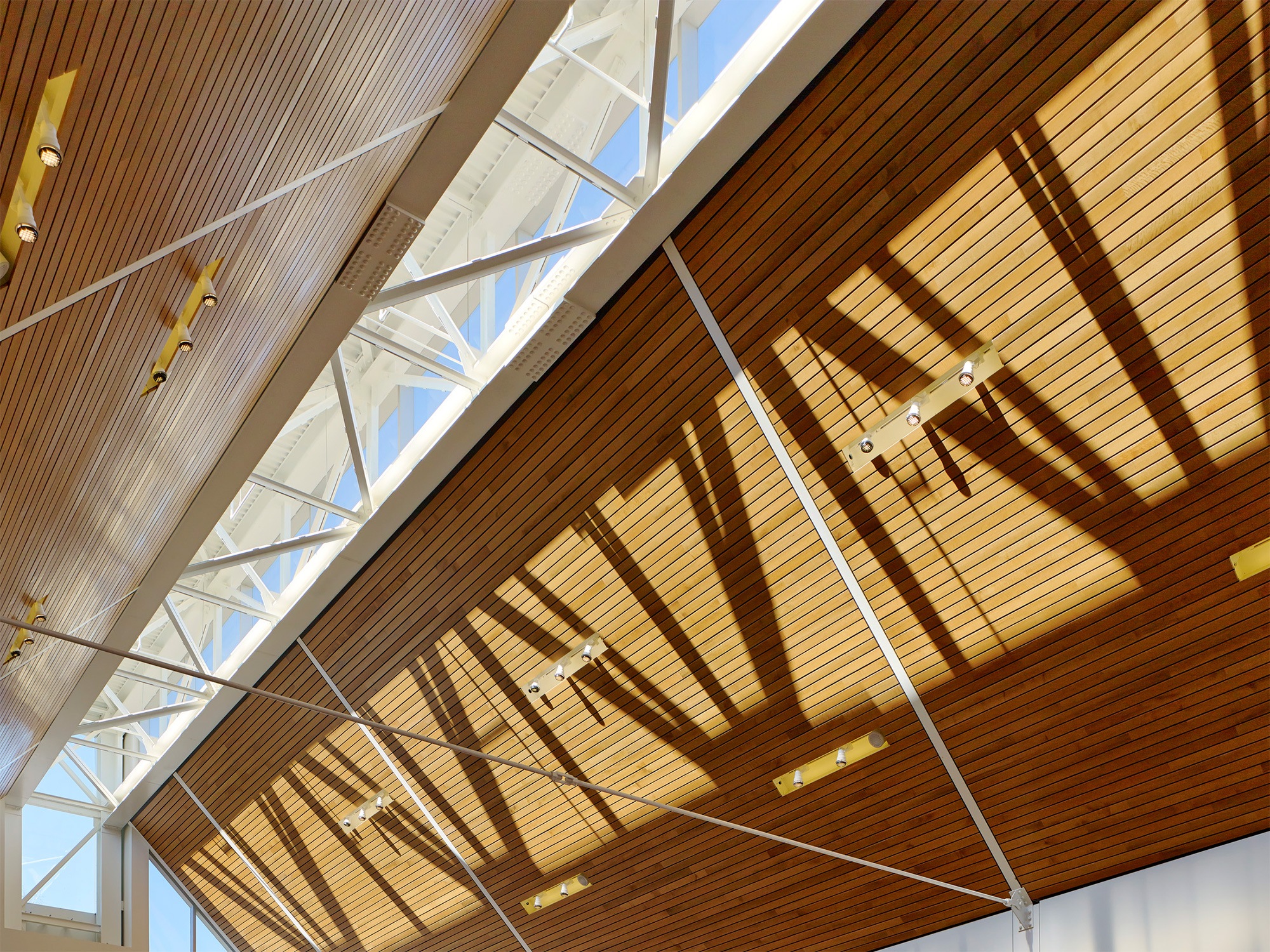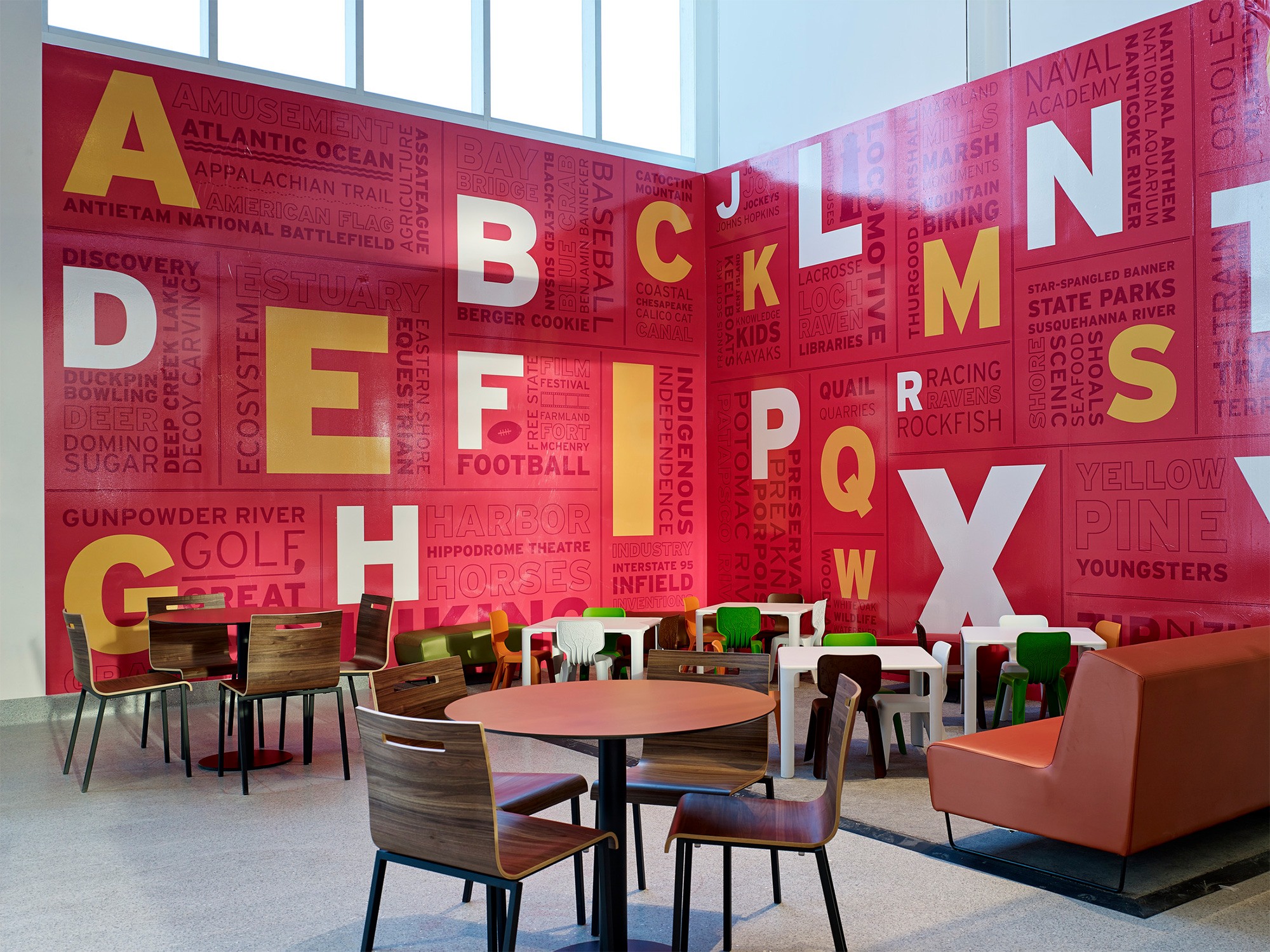This site uses cookies – More Information.
Chesapeake House and Maryland House

Chesapeake House: 30,000 GSF
The Maryland House and Chesapeake House Travel Plazas serve more than 5 million visitors per year on Interstate 95, the most heavily traveled highway on the East Coast. The design team saw the project as an opportunity to reintroduce the travel plazas in a sustainable way, transforming the concept of the isolated and prototyped node along a state highway from a drive-in, drive-out user mentality into an opportunity for millions of visitors to engage with high performance buildings that are intimately tied to Maryland culture and ecology. The sustainable buildings demonstrate the state’s ongoing commitment to renewal and development.


Chesapeake House’s new design was sited within the pre-existing building footprints to preserve trees and green space. The architects looked to regional architectural forms and the Chesapeake Bay, the largest estuary in the United States, as a source of inspiration. The bold designs respond to the scale and speed of the highway yet provide a memorable sense of pause.



The environmental signage at Chesapeake House was designed with a bold, typographic palette. Nautical themes are expressed in natural hues with glassy transparencies reminiscent of sunlight and water.

The travel plazas were awarded a USGBC award from the state of Maryland for notable sustainable design features including a 25% reduction in impervious surfaces from existing conditions, on-site stormwater management, the use of recycled and regional materials, and preserved open space with restored native plantings. The buildings contribute to a healthier environment while serving an important role to residents, visitors, and travelers in Maryland.


Two 180-foot-long box trusses support the roof over the dining and rest area while serving as clear story elements bringing in light from the north and south. A voluminous interior space clad in wood creates a warm and welcoming space day and night.




Maryland’s first monument dedicated to women veterans was designed by Ayers Saint Gross in the reflective outdoor garden at the Chesapeake House. The monument is a granite monolith with three angular plaques engraved with inspirational quotes from veterans, placed under a canopy of gingko trees chosen for their vibrant yellow fall leaves.
